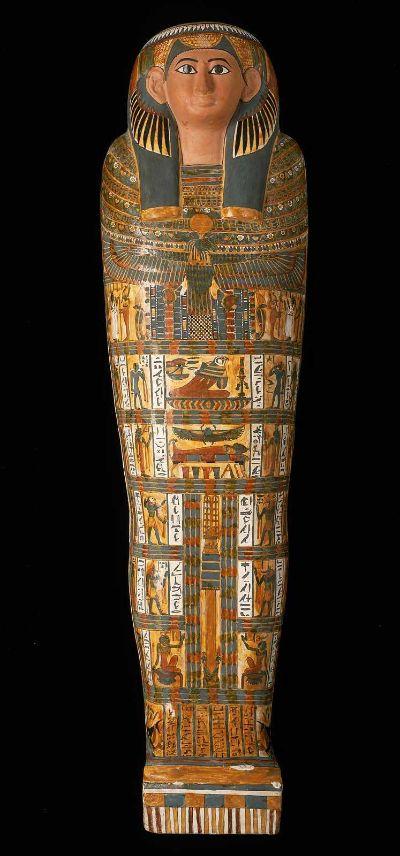| 8 of 9 | << First | < Previous | Next > | Last >> | Back to gallery |
Inner coffin of Nesmutaatneru
Egyptian, Late Period, Dynasty 25, 760–660 B.C.
Findspot: Thebes, Deir el-Bahari, Egypt
Length: 169 cm (66 9/16 in.)
Plastered linen over wood
Classification: Tomb equipment
On view in the: Egyptian Funerary Arts Gallery
Beautifully preserved coffin of the mummy of Nesmutaatneru (see 95.1407a). The coffin, of a type that replaced cartonnage cases, takes the form of a mummified body standing on a pedestal and supported in back by a djed-pillar, the hieroglyph for stability and emblem of Osiris. The decoration is brightly painted on a layer of plastered linen. Nesmutaatneru wears a vulture headdress over a long wig, an elaborate broad collar, and a ram-headed pectoral. The body is divided by bands of hieroglyphic text into compartments containing images of deities associated with the afterlife. In the central scene, the deceased lies on a bier surrounded by Isis and Nephthys and surmounted by a winged scarab representing Khepri.
© 2010 Museum of Fine Arts, Boston














